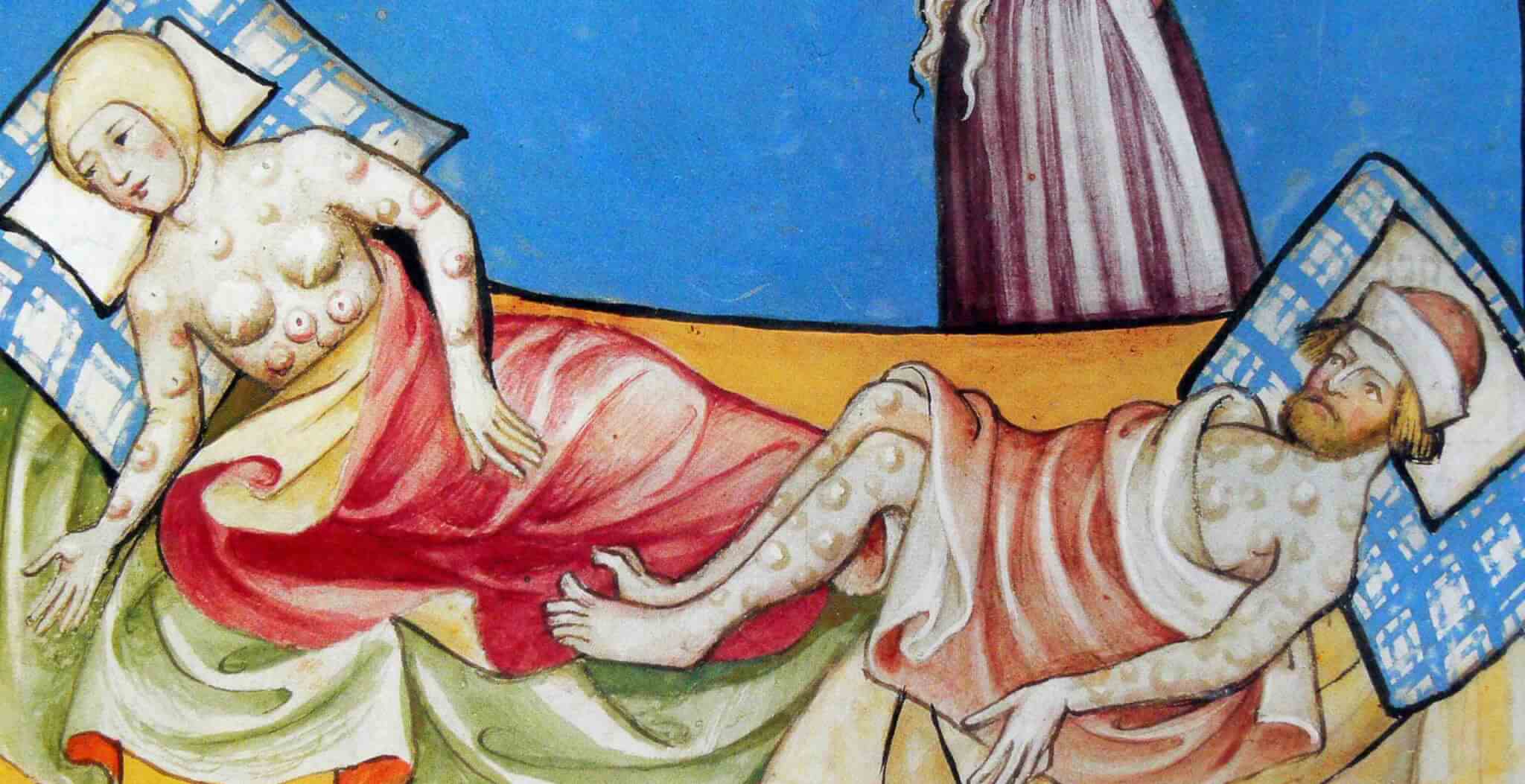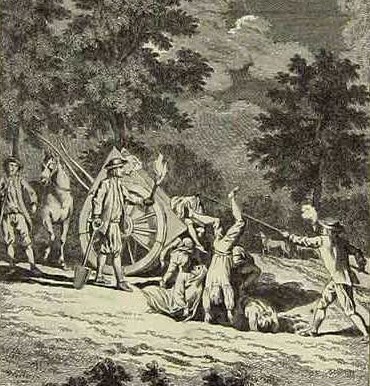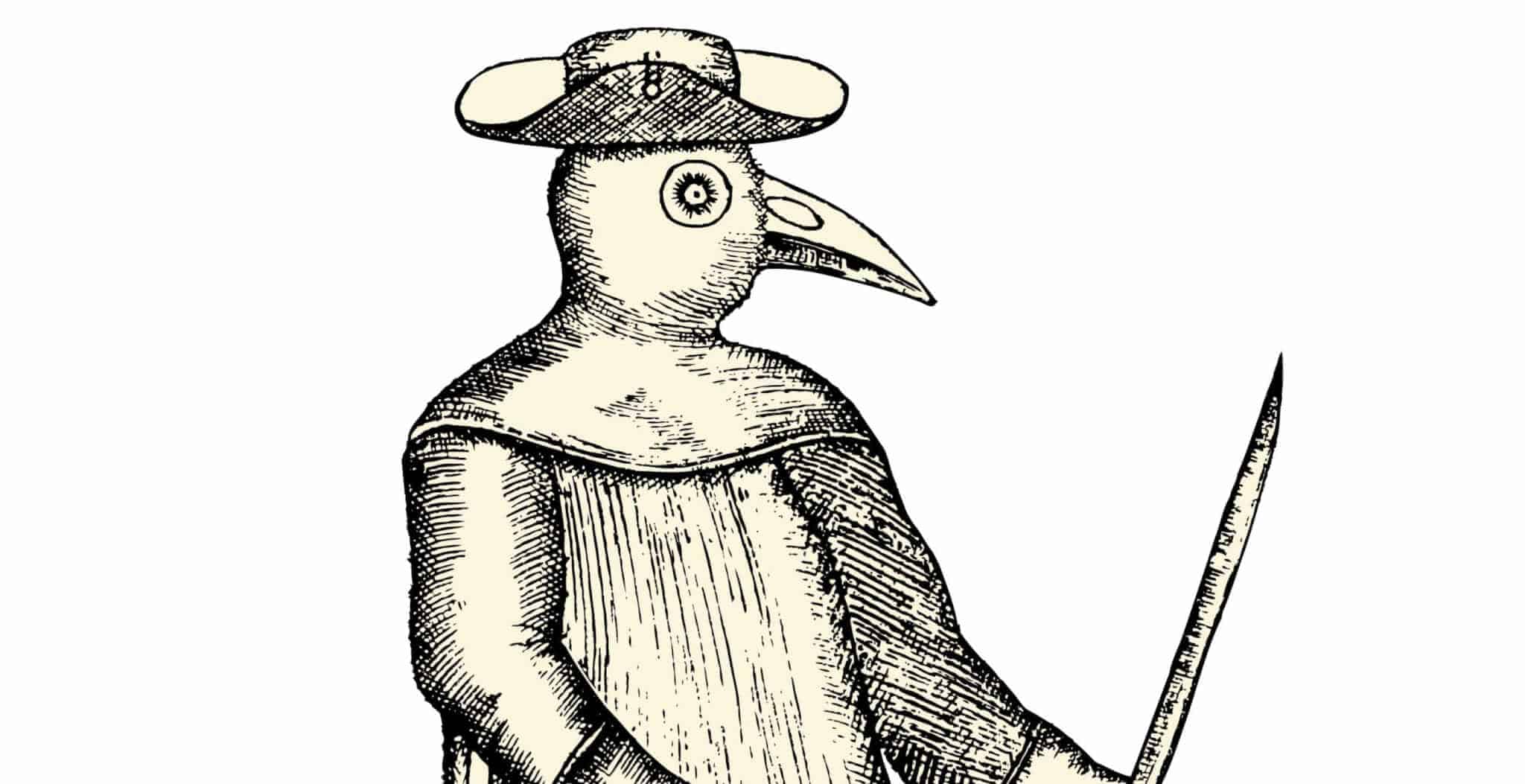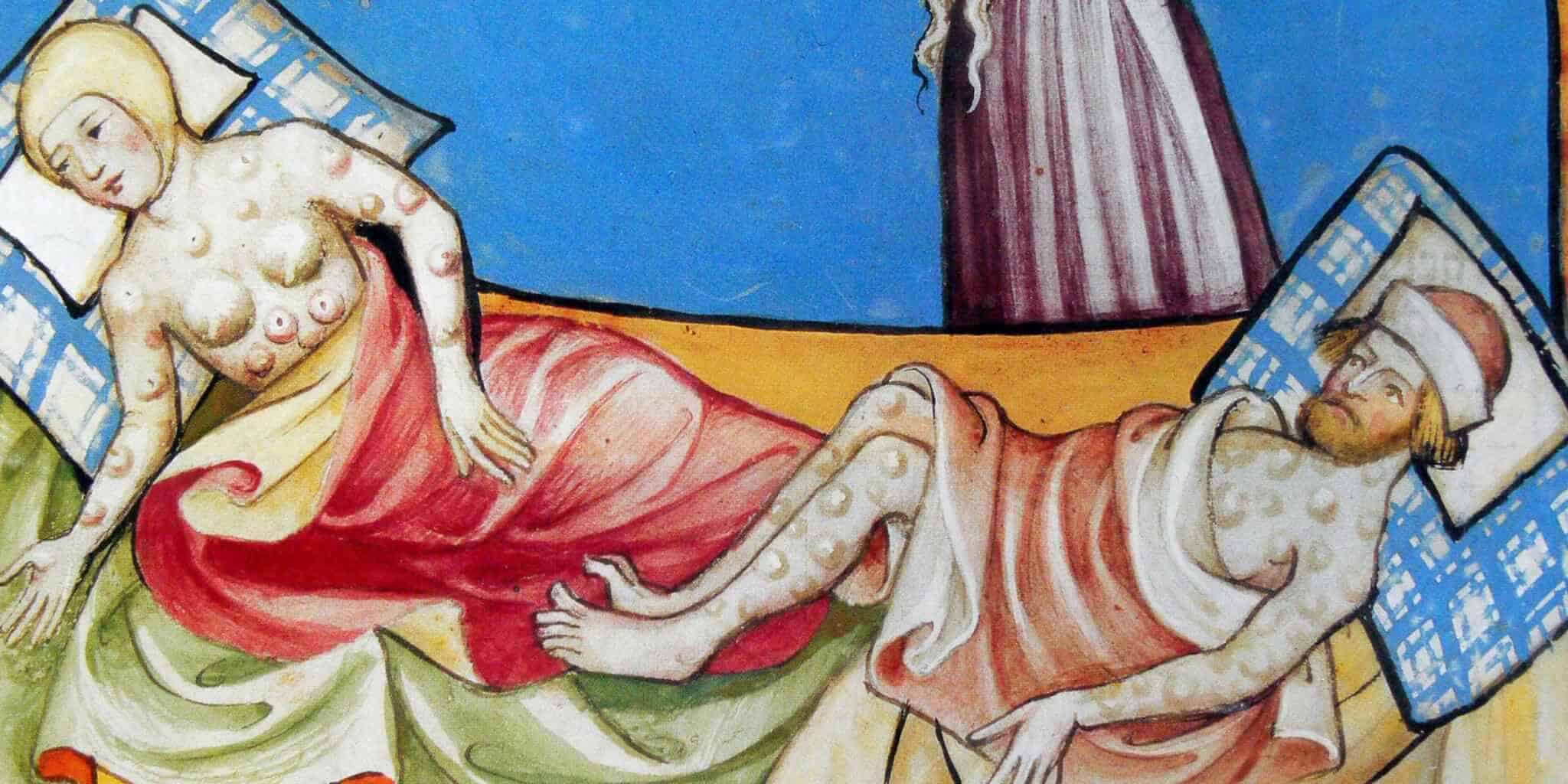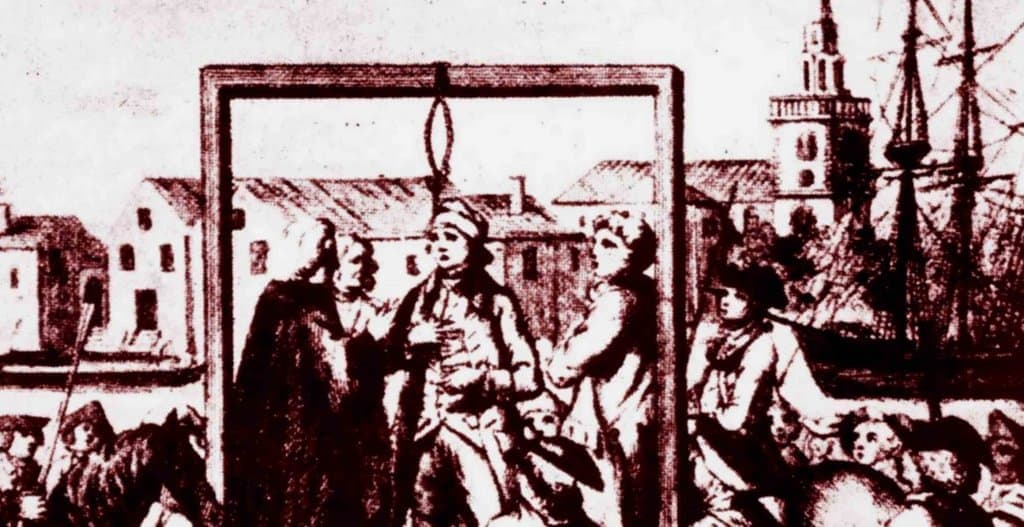Overcrowded, dirty and awash with sewage… it’s hardly surprising that the bubonic plague flourished in the crowded streets of London. Over 15% of London’s population was wiped out between 1665 and 1666 alone, or some 100,000 people in the space of two years. But where did all these bodies go?
The answer: in tens, if not hundreds of plague pits scattered across the city and the surrounding countryside. The majority of these sites were originally in the grounds of churches, but as the body count grew and the graveyards became overcharged with dead, then dedicated pits were hastily constructed around the fields surrounding London.
Unfortunately there is very little evidence about the exact location of these plague pits. Instead, to construct the map below we have had to use a variety of sources including Peter Ackroyd’s London: The Biography, Daniel Defoe’s A Journal of the Plague Year, Basil Holmes’ The London Burial Grounds: Notes on Their History From the Earliest Times to the Present Day, the internet, as well as help from our social media channels!
The map below is an ongoing project and we’re always in search of new sites, so if you know of any omissions then please let us know by using the contact form at the bottom of this page.
| St Paul's Church, Shadwell | Confirmed use as one of the five plague pits located in Stepney, used between 1664 - 1666. |
| Christchurch Gardens, Westminster | Established in 1640 to provide additional burial space for nearby St Margaret's, part of the site was designated as a plague pit in 1665 and is now a public garden. Also buried here is the Crown jewels thief, Colonel Thomas Blood, although he died somewhat later in 1680. |
| Stepney Mount | Although the specific location of the Stepney Mount pest fields are unsure, it is thought that they were in the area surrounding St Philip's church. If true, this would have been one of the largest plague pits in London and would have covered acres of grounds. |
| Vincent Square, Westminster | Owned by Westminster School, at least some of these playing fields are located above a former plague pit called Tothill Fields. The rest of the pits are situated underneath nearby government buildings. |
| Pesthouse Close / Marshall Street Leisure Centre, Soho | As its name suggests, this area was once home to a pest-house where infected or sick people would have been taken to be quarantined and studied. Although first built in 1593, the pest-house played a vital role in attempting to quarantine the outbreak in 1665. Bodies were then buried at an adjoining common cemetery between Poland Street and Marshall Street. |
| Holywell Mount, 38 Scrutton Street, Shoreditch | A burial ground for centuries, Holywell Mount was used heavily during the 1664 - 1666 outbreak of the Great Plague. There is still an open area which can be seen from 38 Scrutton Street, although the rest of the site has now been built over.
The picture below is of Holywell Mount in 1665 and comes with the enscription 'View of the manner of burying the dead bodies at Holy-well mount during the dreadful Plague in 1665'.
|
| St Dunstan's, Stepney | During the Great Plague, the church of St Dunstan's donated a large amount of its lands for interring those who succumbed to the outbreak. These plague pits are now beneath the dog walking area around the church. |
| Seward Street / Mount Mills, between Shoreditch and Finsbury | Once the site of St. Bartholomew's Hospital Ground, the area was used as a large plague pit between 1664 - 1666. Reputedly a rather shallow grave, residential buildings on top of the site have only recently been constructed. From Daniel Defoe's A Journal of the Plague Year:
'A piece of ground beyond Goswell Street, near Mount Mill... abundance were buried promiscuously from the parishes of Aldersgate, Clerkenwell and even out of the city.' Thousands of bodies are thought to lie here.' |
| St John's Church, Scandrett Street | Although the majority of St John's church was destroyed by WW2 bombs, the site of the original 1665 plague pit can still be seen directly opposite from the church's remains. |
| Knightsbridge Green, Knightsbridge | A small plague pit dating from around 1664, thought to have been used as a burial ground for those who died at the nearby Knightsbridge lazarhouse (leper colony), (once part of the Westminster Abbey estate). |
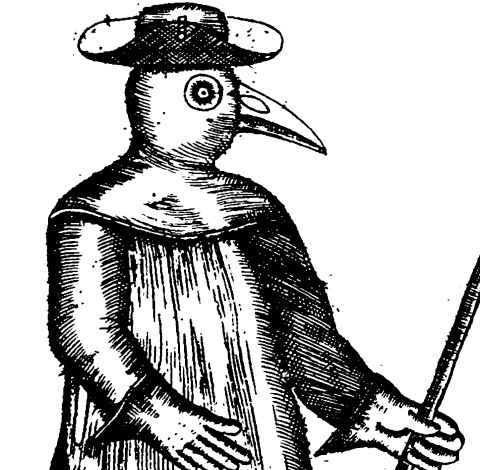
| Gower's Walk Pest Field, near Aldgate East | The burial site for thousands of plague victims, now occupied by warehouse apartment conversions. |
| Aldgate Underground Station | As described by Daniel Defoe in his book, A Journal of the Plague Year.
'A terrible pit it was, and I could not resist my curiosity to go and see it. As near as I may judge, it was about forty feet in length, and about fifteen or sixteen feet broad, and at the time I first looked at it, about nine feet deep; but it was said they dug it near twenty feet deep afterwards in one part of it, till they could go no deeper for the water; for they had, it seems, dug several large pits before this. For though the plague was long a-coming to our parish, yet, when it did come, there was no parish in or about London where it raged with such violence as in the two parishes of Aldgate and Whitechappel.' |
| Sainsbury's, Whitechapel | The purported location of a 17th century plague pit containing human burials. |
| St-Giles-in-the-Fields | The church's own website states that over a thousand people were buried in pits in St Giles graveyard. |
| Golden Square, Soho | This delightful little square is situated in the centre of Soho and has a secret history as a 17th century plague pit. As Lord Macaulay wrote in 1685:
'[it was] a field not to be passed without a shudder by any Londoner of that age. There, as in a place far from the haunts of men, had been dug, twenty years before, when the great plague was raging, a pit into which the dead carts had nightly shot corpses by scores. It was popularly believed that the earth was deeply tainted with infection, and could not be disturbed without imminent risk to human life.' |
| Charterhouse Square, Farringdon | The largest mass grave in London during the Black Death. It is thought that around 50,000 bodies are buried here. The pit was unearthed during Crossrail building work in March 2013 when the Museum of London were brought in to excavate and study the remains. |
| All Saints Churchyard, Isleworth | It is reported that 149 victims of the Great Plague were buried here in 1665. |
| 37-39 Artillery Lane, Bishopsgate, City of London | The site of a 14th and 15th century plague pit, although excavations in the 1970's also uncovered a large Roman cemetery which was backfilled in the mid 2nd century. |
| Vinegar Alley, Walthamstow | Named after the huge amounts of vinegar that were used around the plague pit in an attempt to contain the spread of the disease in 1665. |
| Cross Bones Graveyard, Southwark (pictured below) | Better known as an unconsecrated memorial to the thousands of prostitutes who lived, worked and died in Southwark, there is also evidence to suggest that Cross Bones was used as a plague pit. Specifically, the lease for Cross Bones passed to the churchwardens of St Saviour's parish in 1665 during the height of the Great Plague. |
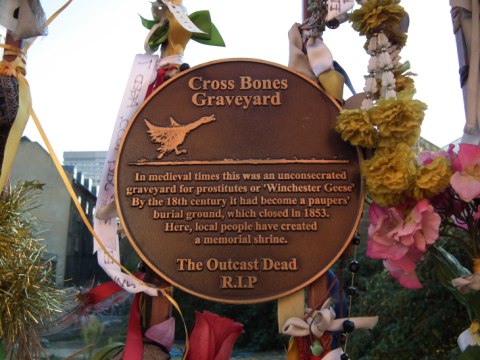
| Upper Street, Angel | A small triangular piece of land (now known as Islington Green) used as a plague pit in the 17th century. |
| Blackheath | Contrary to popular legend, the name 'Blackheath' is in no way related to the Black Death! However, it is thought that this area was used to the disposal of plague victims during both the Black Death in the 14th century and the Great Plague in the 17th century. |
| Clay Ponds, Brentford | Submitted by @JaneWriting1 on Twitter.
A massive and ancient burial site which was partially excavated in the 1830's. It is likely that at least some of this site was used as a plague pit certainly in the 17th century and possibly in the 14th century. |
| Green Park | Submitted by @halomanuk on Twitter.
Discovered in the 1960s during the construction of the Victoria Line. Excavated bones dated back to the 17th century, suggesting that this was a plague pit. |
| Bakerloo Line, London Depot, near Elephant & Castle | At the south end of the depot lie two tunnels; one leads to Elephant and Castle whilst the other is a dead end and acts as a runaway lane for trains that are unable to stop. Behind the walls of the this tunnel lies a plague pit. |
| National Maritime Museum, Greenwich (unconfirmed) | Frommer's 2012 guide to London reports that a giant pit lies below Greenwich's National Maritime Museum, although this is unconfirmed. |
| Hand Alley (now New Street), Bishopsgate | As confirmed by Defoe's History of Plague, where he wrote:
'The upper end of Hand Alley in Bishopsgate Street was then a green field, and was taken in particularly for Bishopgate parish, though many of the carts out of the City also brought their dead thither also...' |
| Pitfield Street, Hoxton | As its name suggests, Pitfield Street in Hoxton was once the home to a large plague pit dating from 1665 - 1666. This has been confirmed by Hackney Council, and today local residents are warned to 'keep off the grass'! Many thanks to Cory Doctorow for helping us identify the exact location of the pit, as well as an unidentified submitter who tipped us off to the site. |
| Houndsditch (unconfirmed), City of London | According to many sources, including Wikipedia, many of the office blocks towards the north western corner of Houndsditch do not occupy full plots due to a littering of plague pits in the area. What is certain is that Houndsditch was once used to dispose of dead dogs during Roman times, hence its name. |
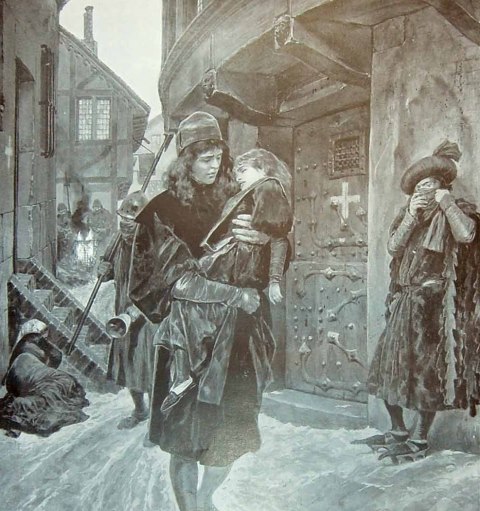
| Pardon Plague Pits, The City | Submitted by David Brown via email
One of three plague pits arranged by Edward III, Pardon burial ground (also used for criminals and the poor) was to the North of Old Street between St John's Street and Goswell Road. This one was huge - and used for burials for many centuries. |
| The Royal Mint, East Smithfield | Submitted by David Brown via email
Another one of the Black Death plague pits arranged by Edward III. This one at East Smithfield was probably the largest and has been excavated by Museum of London Archeology service. The report shows that burials were very systematic, and not at all like the plague pits associated with the Great Plague. |
| Queen's Wood, Highgate (unconfirmed) | Submitted anonymously via email
It is reputed that a mass of bones from a plague pit were found here during the 19th century, although this has never been confirmed. On an unrelated note, Queen's Wood is one of the last remnants of the once massive 'Great Forest of Middlesex'. |
| Armour House Pit, The City (unconfirmed) | Submitted by Steve Aptel via email who wrote...
"In the 1980s I worked in Armour House which was at the junction of St Martins LeGrand and Gresham St. We explored the sub basement and found a soil area that appeared to be bridged by the building. We were puzzled by this. Some time later we found a floor plan of the sub basement and this showed the soil area as a Plague Pit!" |
| Shepherd's Bush Green (unconfirmed) | Submitted anonymously via email
It is said that planning applications for new build properties on Shepherd's Bush Common are repeatedly turned down for risk of disturbing the plague pit beneath. |
| Gipsy Hill Plague Pit (unconfirmed) | Submitted by Helen Codd via email
Located just south of the roundabout connecting Dulwich Wood Park and South Croxted Road lies a reputed plague pit. We struggled to find any hard evidence to support this claim, although local history forums seemed relatively confident of its existence. |
Have we missed something?
Although we've tried our hardest to list every plague pit site in London, we're almost positive that a few have slipped through our net... that's where you come in!
If you've noticed a site that we've missed, please use our contact form to let us know.
